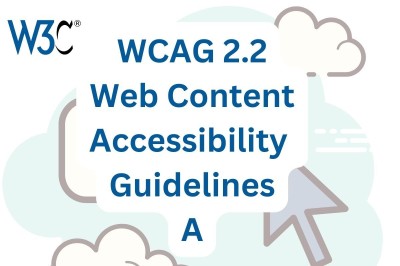WCAG Priority A

WCAG 2.2 Priority A Standards
This set of building regs for websites, according to the WCAG, are the absolute minimum a website must achieve. As they put it, "A Web content developer must satisfy this checkpoint. Otherwise, one or more groups will find it impossible to access information in the document. Satisfying this checkpoint is a basic requirement for some groups to be able to use Web documents." (https://www.w3.org/TR/WAI-WEBCONTENT/full-checklist). This is Version 1 of the Priority A Website Accessibility Standards and it dates back to 1999.
Version 2.2 of this Standard was released in October 2023 and is described by WCAG in the following way: "These conformance requirements essentially prohibit elements that would make the website inaccessible. Websites that do not at least meet WCAG 2.2 A are impossible or exceedingly difficult for people with disabilities to use".
What sort of areas fall under Priority A?
Priority A covers the basic stuff, putting Alt Text with images, allowing websites to still load and function even with external scripts (such as animations) blocked, captions with videos and so on.
Sadly, according to AIM, 97.4% of the Home Pages from the 1 million most popular websites in the world (https://webaim.org/projects/million/) fail to meet this basic level. This may be shocking to read but it is not surprising. This means that nearly every one of the world's top 1 million websites are open to litigation. That is a sobering thought and I fear that this may become as big as PPI claims from the UK banks have been in recent years.
Please be aware that this is the most basic of all the automated tests available and ignorance is no excuse.
Where does it sit in law?
The Disability Discrimination Act 1995 has always applied to websites, as has The Equality Act, which replaced it in 2010, although not explicitly. It has become acceptable that this minimum standard (Single A) would be the lowest possible benchmark to use in a discrimination claim and therefore there is no excuse for a web developer not being aware of this information and being able to comply with it.
In the UK, recent changes in law have meant that both the owner of a website and the developer of the website (the supplier) are liable to prosecution should there be litigation regarding its inaccessibility and this is not, therefore, an issue that should be ignored.
If you are concerned that your current website Accessibility Statement may be inadequate or you do not currently have one for your website, please get in touch with us for a free 15-minute consultation by following this link.

